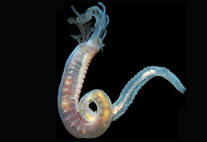Abstract
Recent investigations into the species diversity of false geckos (genus Pseudogekko Taylor) have revealed several cryptic species, highlighting the need for a more thorough understanding of diversity within this enigmatic genus of endemic Philippine geckos. Newly available genetic data reveal that two of the four currently recognized species are complexes of multiple deeply divergent evolutionary lineages. In this paper we evaluate species diversity in one of these complexes, P. brevipes Boettger, and describe one additional new species. For nearly a century, P. brevipes has been recognized as a single, “widespread” species with a geographic range spanning two major faunal regions and several island groups. Poor understanding of this species has persisted due to both limited sampling and its apparent rarity. We evaluate both morphological and genetic data to define species limits in P. brevipes, and find character-based evidence to justify the recognition of two unique evolutionary lineages, one of which we describe as a new species (P. atiorum sp. nov.). The species included in this study have allopatric distributions and differ from congeners by numerous diagnostic characters of external morphology, and therefore should be recognized as full species in accordance with lineage-based species concepts. This newly described species increases the total number of species of Pseudogekko to seven.

